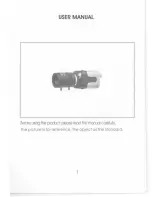
Cognex CDC Series Camera Description
3
44
Cognex MVS-8100D and CDC Cameras Hardware Manual
CDC Series Camera Overview
This section provides a high-level look at the CDC camera series, describes the CogLink
communication protocol, and describes the rolling shutter feature.
CDC Series Camera Features
Cognex CDC series cameras use CMOS active pixel sensor technology to convert light
energy directly to digital image data. The camera converts the image data to a digital
stream, split into data packets according to Cognex’s CogLink camera communications
protocol, and sends the digital stream over the CogLink high-speed serial bus to a
Cognex MVS-8100D frame grabber. The MVS-8100D reassembles the packets of image
data and makes the captured camera image available to Cognex software running on
the host PC.
There are three models in the CDC camera series.
•
The CDC-50 captures image sizes up to 640x480 pixels at a frame rate of up to 59
Hz per camera
.
A three channel MVS-8100D frame grabber combines the frame
rates of all three camera channels for an aggregate frame rate of up to 177 Hz,
limited only by PCI bus throughput. The CDC-50 camera can use either a global
shutter or a rolling shutter, selectable by software. These shutter types are
described in
•
The CDC-100 camera captures images sizes up to 1280x1024 pixels at a frame rate
of up to 13 Hz. The CDC-100 uses a rolling shutter.
•
The CDC-200 camera captures images sizes up to 1280x1024 pixels at a frame rate
of up to 26 Hz, and uses a global shutter.
Global and Rolling Shutters
A global shutter is the standard full frame shutter, where the entire range of pixels in the
image sensor is exposed at one time. Global shutter mode works well with strobed or
unstrobed image captures of a moving target.
In rolling shutter mode, the exposure for each line is offset and occurs in parallel with
the transfer of digitized pixel data. The exposure may be as small as a single line or it
may be active for multiple lines. If the exposure is long enough, then all lines can be
exposed for a specified time interval. Rolling shutter mode works best when the target
object can be moved into the field of view and held stationary for the duration of the
rolling shutter exposure time. Strobing can be used, but must be carefully timed to
coincide with the point at which all the lines of the image are exposed. Both the CDC-50
and CDC-100 cameras support the precise placement of the strobe signal that allows
strobed illumination to be used in conjunction with rolling shutter exposure.
















































